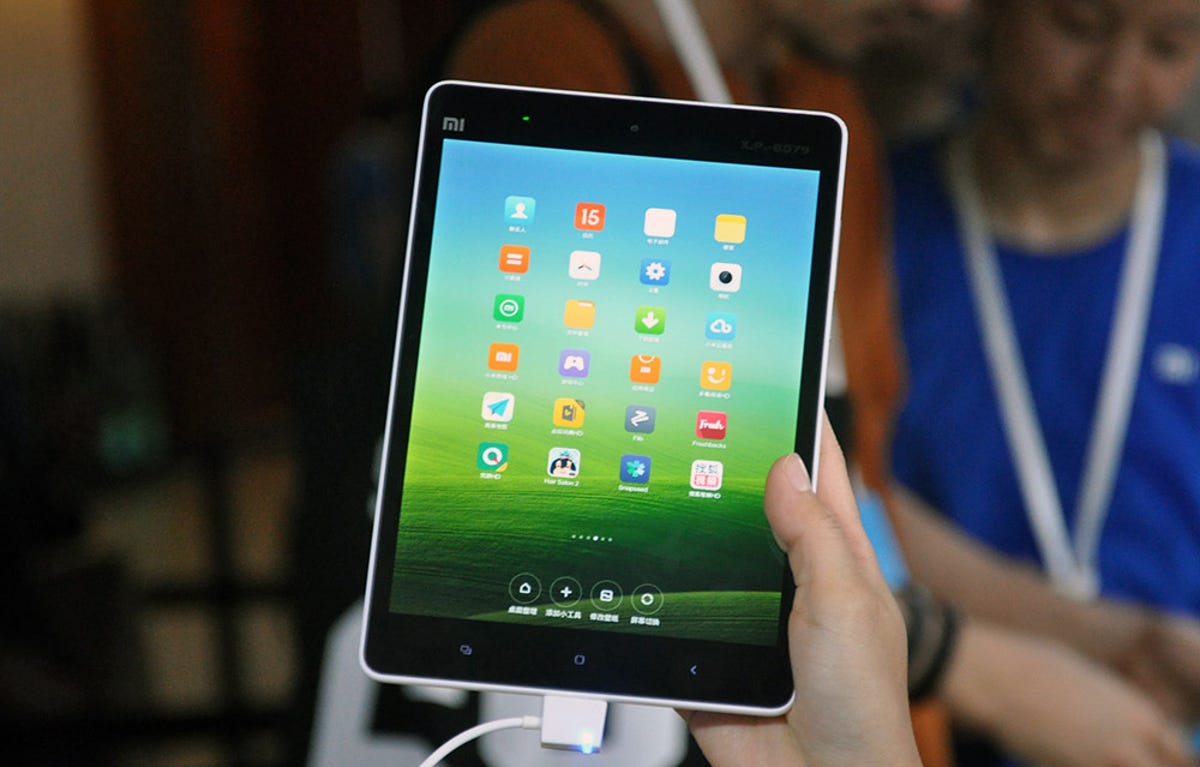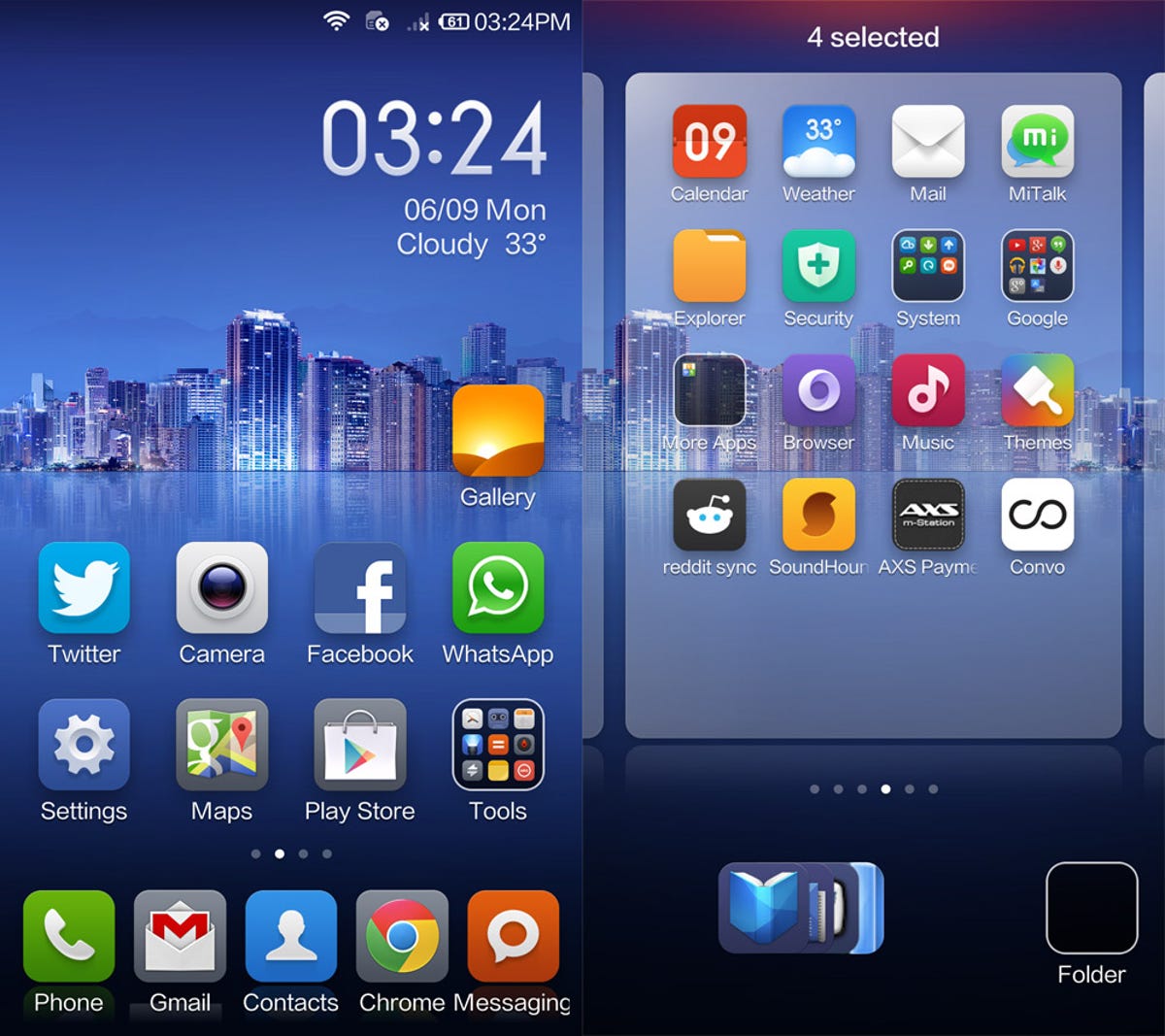
Aloysius Low/CNET
Xiaomi has been relatively unknown outside of Asia, but a new Strategy Analytics report shows that the Beijing-based company has shot up to being the world’s fifth-largest smartphone maker, behind Samsung, Apple, Huawei, and Lenovo.
Related stories
- Xiaomi becomes fifth-largest smartphone maker worldwide
- Xiaomi global VP Hugo Barra: Copying current products is ‘stupid’
- Meet Xioami’s iPhone lookalike, the Mi 4
- Flurry uncovers Xiaomi’s core customer
What people outside of Xiaomi’s home markets, such as China, Taiwan, Hong Kong, Singapore, Malaysia, and India, do know about the 4-year-old company often stems from the negative: Xiaomi’s smartphone designs have been blasted for mimicking iPhone design, though the company has spoken out about this and has added some of its own flair. The Mi Pad tablet and the recent Xiaomi Mi 4 phone are two examples.
Yet Xiaomi is clearly doing something right, and despite arguably riding on Apple’s design coattails, the company’s more mundane smartphones, such as the budget Redmi phone and Redmi Note phablet , are the key drivers behind the company’s growth — a growth that promises to become even more explosive, especially when Xiaomi begins its planned expansion into Brazil and possibly other Western markets.
We’ll be seeing a lot of the company in the next few years. Here are the five key reasons why Xiaomi will be a force to be reckoned with.
Meet Xiaomi’s Redmi Note, a sub-$160 5.5-inch phablet (pictures)






1. High-quality products
It’s hard to deny that Xiaomi has great products — apart from the company’s high-end flagship devices such as the Mi 3 or the Mi 4, its budget line is impressive for the value it offers. Take the Redmi Note, for example. It’s a 5.5-inch phablet with an octa-core processor that offers performance that punches above its price range, but that’s not all. Xiaomi also has other products such as routers and a UHD TV that regularly sell out in China.
Meet the stylish Xiaomi Mi 4 (pictures)






2. Affordable prices
This leads us to the second point, affordability. The Redmi Note, for example, retails at around $154 (£95 or AU$170), depending on the country, which is way below what you’d expect to pay for a smartphone of its calibre. All prices are off-contract.
The company’s flagship products are also priced as midrange phones, but have features that compete directly with the high-end devices. Then there’s the MiTV2, a UHD TV sold in China that costs just $640 (£380 or AU$690), a far cry from what Samsung and LG typically sell theirs for.
Of course, you may be wondering how it’s possible for Xiaomi to slash prices and still make a profit, but the company’s business model is to simply sell as close to cost as it can, and then turn a profit over time when manufacturing costs drop.
3. Mi Fans


Aloysius Low/CNET
Like Apple and Samsung fans, Xiaomi has a dedicated consumer base that absolutely loves its products. In fact, these “Mi Fans” regularly attend the company’s product launches in China, where they loudly cheer and applaud every announcement. These Mi Fans aren’t just limited to China, though. Xiaomi regularly reaches out to fans in other countries to talk about its most important product, MIUI.
4. MIUI
At the core of Xiaomi’s products lies MIUI (“my UI”), a ROM skin based on Android that powers the company’s smartphones and tablets. MIUI has plenty of features you can’t find on Android or iOS, like navigation gestures and plenty of themes to jazz up your phone as well.


Aloysius Low/CNET
MIUI allows Xiaomi to offer a unique experience compared with other smartphones and the best part of the Android ROM is that you can download and use it on other Android phones as well. So if you want to use MIUI on your older HTC One , you can do so simply by just heading to the MIUI site and downloading the appropriate ROM.
5. Hugo Barra
Snagging a former Google exec from Silicon Valley to head the company’s international expansion was quite a coup for Xioami.


Aloysius Low/CNET
Barra represents the face of the company to English-speaking media (Barra himself hails from Brazil), and his past success with Google as Android’s vice president carries tremendous weight for Xiaomi in the smartphone world.
Under Barra’s direction, Xioami hopes to make true world phones in the next two years, blending Chinese and global perspectives for a universally appealing phone that achieves distribution along the lines of a Samsung or Apple flagship. With his extensive contacts and carrier relationships amassed during his time at Google, Barra has the reach to help Xiaomi succeed in the increasingly competitive smartphone market.



